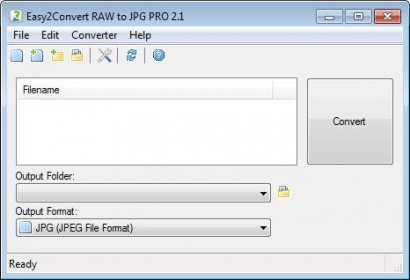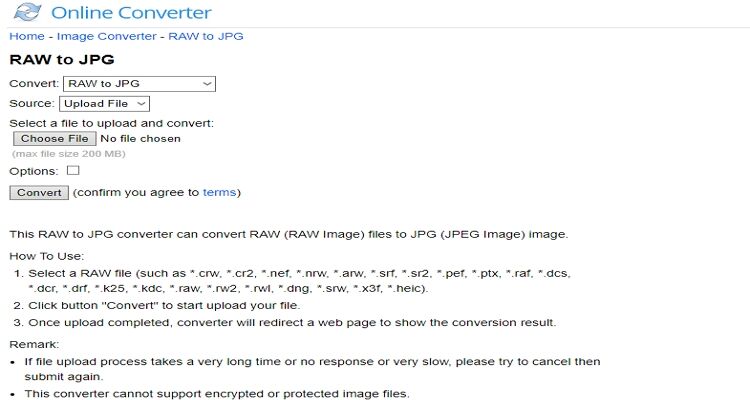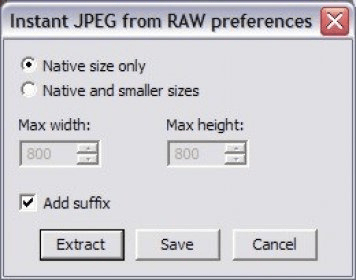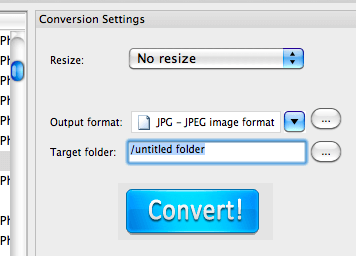- Download Raw To Jpg Converter Softwaremarcus Reidsville
- Download Raw To Jpg Converter Softwaremarcus Reid Tool
- Raw To Jpg Converter Free
- Cr2 To Jpg Converter
- Download Raw To Jpg Converter Software Marcus Reid Youtube
5 Best Free PPT To JPG Converter Software For Windows. Here is a list of 5 best free PPT to JPG converter software for Windows. These PPT (PowerPoint) to JPEG converter software let you convert PowerPoint Presentations into JPG format easily. All these software are available free to download for your Windows PC. Png To Jpeg Software. Batch convert png to jpeg,jpg with high quality and fast speed. Okdo Png to Jpeg Converter is the easiest png to jpeg converter. Own the powerful conversion function. File Name: okdo-png-to-jpeg-converter.e xe; Author: Okdo Software; License: Shareware ($22.95) File Size: 3.09 Mb; Runs on: WinXP, Win2000, Win Vista, Win98. Jpg Jpeg to Tiff Png Gif Bmp Converter 3000 provides you with a convenient, efficient and free image converter that can convert jpg, jpeg to any type of images like bmp, tif, gif, wmf, emf, rle, png, tga in batches with ease. The output image quality. Blog Home About Press Contact Blog Home About Press Contact jpg convert pdf software, free download. 1/2/2018 0 Comments Convert PDF to JPG online, PDF to JPG free converter. Upload PDF, convert PDF to JPG, download JPG. Can't be easier! We place great importance on the safe handling of your PDF and and JPG. All uploaded PDF.
This page has answers to frequently asked questions. There's also useful information on the 'Troubleshooting' page.
General FAQs
What kind of files will CornerFix work with?
CornerFix will work with nearly any DNG file, regardless of origin. You can convert almost any raw format (e.g., Nikon NEF, Canon CR2, etc, etc) to DNG as discussed on the 'Convert to DNG' page.
There are some limitations, but almost almost any camera's images can be converted, other than some exotic specialist ones. Technically, CornerFix will work with any file, as long as it meets the following requirements:
- The DNG file must contain either Bayer sensor data, or 'linear raw' data. Linear Raw is as produced by, for example, cameras with Foveon sensors.
- The image data must be in either 8-bit or 16-bit form.
Download Raw To Jpg Converter Softwaremarcus Reidsville
Where can I find more information on all of this?
There are several good sources:
- The L Camera Forum. There has been a lot of discussion, dating back several years, as to why Cyan edges occur, and how best to use CornerFix.
- Reid Reviews. Sean Reid has done a lot of investigation of the various vignetting effects on Leica M8 and M9 camera, and lens reviews. Note however that Sean's site is a pay site.
- Jeff Hapeman's CornerFix tutorial. Jeff Hapeman has posted a good tutorial on using CornerFix, going into the detail of how he uses CornerFix in conjunction with the Leica M9 and Voigtländer 12mm and 15mm wide-angle lenses.
- My blog, where I often talk about CornerFix related issues.
What are alternatives to CornerFix?
Alternatives include PanoTools Radial Luminance, or coding your lenses. Various hacks to code non-Leica lenses are regularly discussed on the LUF.
Is this supported by Leica or any other camera manufacturer?
No, this software is not supported by or endorsed by Leica or any representative of Leica, or any other camera manufacturer.
I've got lens profiles generated on previous versions of CornerFix. Do I need to recreate them?
No, there is absolutely no advantage in recreating any lens profile. Neither the format of the profiles, or the code used to build them, have changed since the earliest versions of CornerFix. However, note that the profiles from one camera cannot be used on the another (e.g., Leica M8 and M9), even if the two cameras use the same lens; the two cameras are optically entirely different.
The image displayed on the left hand side of the screen is different to the image on the right! What's going on?
The images displayed on the left and right hand side of the screen are not the actual raw data in the DNG – they are the preview thumbnails that are encoded into the DNG. The thumbnail on the left is the original thumbnail, as generated by the camera, and based on the camera's JPEG settings at the time, assuming that the DNG file hasn't been edited. The thumbnail on the right is generated by CornerFix, and will be somewhat different because it isn't using the camera's JPEG settings. If this really bothers you, you can regenerate the thumbnail on the left to match CornerFix's settings as follows: Start CornerFix, but don't load a profile. Then load your image, and once its finished loading, save it under a new name. The new file will then have the CornerFix generated thumbnail in it, and you can load and then devignette that. Then the two thumbnails will be comparable.
Does it have to be a 18% grey card or will any evenly lit neutral surface do?
Any evenly lit surface that is a reasonably neutral color will do for generating the reference image. So, e.g., a sheet of white paper will do. Or a featureless wall. Just remember to overexpose by about 1-3 stops. The image needs to be “bright white”, but not saturated. CornerFix will warn you if it detects saturated areas in a reference image.
Can I use a diffusion filter rather than a gray card?
Maybe. Some people have got good results. However, tests have shown that diffusion filters can introduce vignetting all of their own, which will distort your results.
Does the white balance matter?
No. Reference images do need to have a reasonable amount of light of all colors. Anything that is roughly white or grey, under any kind of lighting from overcast to household incandescent will be fine. Images that you are correcting can have any white balance at all. CornerFix maintains the existing white balance in the center of the image, but in effect “warms” the corners of the corrected image.
Does the aperture matter?
Aperture doesn’t matter to CornerFix. However it is the case that for some lenses, the amount of vignetting varies somewhat by aperture. Personally, based on looking at CV12 images, my view is that just using one profile per lens at all apertures will be fine for practical photographic purposes. And the CV12 is probably the most extreme lens we have to deal with right now. Probably the single profile would best be generated in the mid-aperture range. But some folks are more particular than others, and will want to do profiles for each aperture.
Website of Carmelito Lauron.  5.2 An applicant shall submit to the head of elementary or secondary school where a teacher shortage or vacancy (regular and/or natural) exists, a written application, with the Applicant Number indicated, supported by the following.
5.2 An applicant shall submit to the head of elementary or secondary school where a teacher shortage or vacancy (regular and/or natural) exists, a written application, with the Applicant Number indicated, supported by the following.
Does the focus distance matter?
Not really. There is a difference in vignetting with focus distance, as a result the variation of lens to sensor distance as focus changes, but on the images I’ve generated, the effect is too minimal to be an issue in practice. For reference images, it may be useful for the image to be slightly out of focus, so as to even out any imperfections in the test card.
I saved a file, but CornerFix still seems to have the old one open?
In many Windows programs, when you do “Save as”, your old file is closed, and you are working on the new file. However CornerFix is different. It keeps the original file, the one displayed on the left of the screen, open. This is so that you can easily look at the effect of a different profile, just by opening a different CPF file.
All this profile generation stuff is a pain. Isn't there something simpler?
What you can do is to download a profile for a lens which is a close as possible to the one you have, and then use the Luminance and Chroma adjustments to get a reasonable result. But really, generating a reference image is pretty easy...
What's all this compression stuff?
There are three kinds of compression in common use on digital cameras:
- Level compression – this is what Leica M8's and many models in the Nikon and Canon line up use. Taking the M8 example, the original 14 bit data from the CCD has 16383 levels. This is then reduced to 256 levels by a non-linear mathematical transform which uses the way the eye perceives light to eliminate information that is unlikely to be visible to the eye. This is known as perceptual encoding. This is a form of lossy compression.
- Lossless compression. It's possible to use mathematical techniques to lossless compress data. ZIP files are an example of this. Most images have areas of similar colors in them – e.g., a wall. Lossless compression takes advantage of this similarity to just say “10 pixels of x color”, rather than actually storing all 10 pixels separately.
- Lossy mathematical compression. This builds what is effectively a mathematical model of the image, or parts of the image, and stores the mathematical description, rather than the image. JPEG images commonly use this form of compression, but it is seldom used on RAW images.
CornerFix can deal with files that are either level compressed, or losslessly compressed, and can convert files that are level compressed to files that are linear.
If an input file is level compressed, CornerFix will decompress the data, and then devignette the decompressed data. At that point, CornerFix can either write the output file as a linear (non-level compressed) file, or use the same level compression technique as the input file to level compress it. This is selected by the “Enable Level Compression” option in the “Image Compression Options” screen. Whenever possible, you should avoid enabling level compression, as it can generate artifacts, as a result of interactions between the original compression, and CornerFix's subsequent post-devignetting compression. The only reason to use level compression is if your Raw converter cannot process linear files. Download valentine wedding girl games free download.
If the original input file was not level compressed, CornerFix will always write a linear (non-level compressed) file.
CornerFix also offers the option to losslessly compress the output file. Generally, this option should be enabled – it will not impact on image quality, and reduces file size.
As of V9.0.1.8, CornerFix also has a special “Capture One V4” compatibility setting. You should use this only with Version 4 or later of Capture One. Although the DNG file that CornerFix writes when this is enabled is still a completely valid DNG files, and can be used by Adobe applications, most other DNG readers that don't implement the full DNG specification will not read this file correctly. In addition, when using Capture One V4, you should disable level compression and Lossless (Huffman) compression.
My files doubled in size!!
By default, CornerFix now writes a linear (non-level compressed) image, in order to avoid artifacts from compression. On a Leica M8, this doubles the file size. You can enable lossless compression to reduce file sizes. Do not enable level compression unless you have to.
There are these luminance and chroma options now – what's the best way to get the right settings?
The quickest way to a “good” set of option settings is the following: Firstly, decide how much chroma correction you want – almost always, the answer to that is 100%, or 1 on the option screen. Then decide how much luminance correction you want. You can play around by changing values and then hitting “Apply”. The default is 100%, but some people find that too aggressive, as luminance vignetting occurs naturally on all lenses (even on film cameras), so most people are used to seeing some vignetting. But not as much as the M8 does uncorrected!. Finally, if and only if you see concentric circles artifacts on the corrected image, increase the anti-aliasing setting until they go away. Unless you see artifacts, you should leave the anti-aliasing setting at 0, as anti-aliasing makes your image more noisy.
How can I get to see thumbnails rather than file names in the File Open dialog?
On Windows XP, you need to take two steps: Firstly, you need to register DNG files as image files with Windows. You can do this by double clicking on the “dng_thumbnails.reg” file supplied in the CornerFix zip file, and then clicking yes when Windows asks whether you want to add it to your registry. Secondly, when you have the File Open dialog open, click on the small “View Menu” icon in the upper right hand corner of the dialog. Then select the Thumbnails option. Unfortunately, this option is not persistent, and cannot be automatically selected by CornerFix for you.
Warning: This solution DOES NOT work for Windows 7 or Vista. Don't even try.
This is great. How can I contribute?
You can donate to the CornerFix project – there's a Donate button on the Downloads page
Leica Specific FAQs
Is CornerFix better than the Leica M8 or M9's built in corrections?
In theory, not. The M8 can do its corrections prior to compressing the image file to 8 bits. While CornerFix decompresses the image to a 16-bit space before devignetting, it can't recreate the information that was lost during the compression process. In practice, your mileage may vary – the M8's internal correction is by necessity built for average situations. In particular situations, CornerFix may do better, even on coded Leica lenses.
When should I use CornerFix?
Typically, you want to use CornerFix when you are using (a) a lens of less than 35mm which is not a Leica coded lens with any IR filter or (b) a Leica coded lens with a non-Leica IR filter. However, see the answer to (1).
On the M9, should I use compressed on uncompressed DNGs?
Uncompressed 16-bit DNGs are better. CornerFix can and will process compressed DNGs, but there is the possibility of artifacts being created – see the “concentric circles discussion below.
I get these strange concentric circles on the converted image?

Those circles are as a result of compression. Do the following: Firstly, do not enable level compression. This will eliminate 99% plus of all artifact problems. If you still have circle artifacts, increase the anti-aliasing value in the image creation options until it goes away. Usually, with level compressed images, anti-aliasing settings of 1+ are required, but for linear images, values of 0.1 are usually sufficient. But be aware that values above 0.2 increase apparent noise in the corrected image.
How accurate are the estimated aperture values from the Leica M8 or M9 MakerNotes?
This is discussed in Carl Bretteville's paper, but as a rough guide, based on Carl's database, the CornerFix calculated estimate will be accurate to +-0.5 stops about 80% of the time, within +-1 stop 93% of the time, and within 2 stops 98% of the time. Note that this is an average overall lenses in the database – lenses that have a field of view that is very different to the M8's “Blue Dot” sensor, either very wide or very long lenses, will be worse.
How do I correct for “Red corners”?
Red corners are usually as a result of either setting an Leica M8 to “IR On” without a filter on the lens, or incorrectly setting the manual lens type on the M9. To use CornerFix to correct for this, first shoot an image of a grey card or blank wall as described above with the camera set to the exact same settings as generated the problem images, then enable “Bidirectional Correction”, generate a CPF file as described above, then use that to correct your images.
In a surprise move, the affordable G9 will be getting a huge video upgrade. The new firmware bumps the 8bit 4K mode of the G9 up to 10bit 4:2:2 internal. There are also further AF improvements for the GH5 and G9, along with manual exposure control in high-speed movie mode on the S1, improvements to highlight rolloff in V-LOG and CFExpress card support – these cards offer up to 2000Mbps data rates, 300% faster than even XQD… Perfect for internal 4K RAW should Panasonic choose to implement this next.
These firmware updates will be available to download from November 19th 2019, according to Panasonic.
The Panasonic G9 getting 10bit 4:2:2 is a big surprise for me, as it’s quite an old camera. It is on sale for $1197 at B&H which makes it the same price as the more recent G95. The more recent camera only shoots 8bit, although it does have V-LOG L pre-installed. This can nevertheless be added to the older G9 with an upgrade key.
In the UK I have seen the G9 go for as little as £650 used, which is a total bargain for 10bit 4K recording.
Here’s everything Panasonic have planned for the 19th:
LUMIX Full Frame Mirrorless
S1 and S1R firmware version 1.3
Expanded media compatibility
CFexpress Type B card can be used. A CFexpress Type B card boasts a theoretical performance of a maximum of 2,000 Mbps. Realizing an approximately 300% higher transfer speed than that of a conventional XQD card, it supports large-volume photos and videos.
Expanded compatibility with Profoto wireless transmitters

Profoto wireless transmitters “Air Remote TTL-O/P” and “Profoto Connect-O/P” can be used, enabling wireless connection and control of external strobes for professional shooting.*
Improved compatibility with Sigma interchangeable lenses and mount converter
It is now possible to assign functions to the Fn buttons of Sigma L-Mount interchangeable lenses. The performance of Body I.S. (Image Stabilizer) when attaching a lens using the Sigma MC-21 mount converter has also been enhanced and suppresses roll movement.
Improved compatibility with Panasonic interchangeable lenses
It is now possible to assign functions to the lens Fn buttons when the Panasonic LUMIX S PRO 70-200mm F2.8 O.I.S. (S-E70200) is mounted.
Download Raw To Jpg Converter Softwaremarcus Reid Tool
Improved AF performance
[AF+MF] can be used in AFC mode, and it is now possible to set continuous AF on the live view screen in Creative Video mode or in other video recording modes when the video recording area is displayed.
Improved performance of High-Speed Video
It is now possible to manually set the exposure according to the video exposure mode (P/A/S/M) in High- Speed Video mode.
Other major improvements
- It is now possible to select the card slot to save the JPEG images developed by in-camera RAW processing.
- An Fn button can be used for checking the aperture effect while the button is pressed.
- Disabling any physical operation can be assigned to an Fn button
- AF Assist Light has been added to the Focus tab of the Video menu
- The luminance level of photos (including 6K/4K Photo and Post Focus images) can be set when playing back them over HDMI output.
- AE can be locked with the [AF/AE LOCK] button when ISO Auto is set in M mode.
- S1 There were cases where a blue clipping effect occurred in V-Log recording. This problem has been improved.
- S1 There were cases where afterimages occurred in V-Log recording. This problem has been improved.
LUMIX Micro Four Thirds Mirrorless Camera
GH5 Firmware Version 2.6 / GH5S Firmware Version 1.4 /G9 Firmware Version 2.0
Expanded compatibility with Profoto wireless transmitters

Profoto wireless transmitters “Air Remote TTL-O/P” and “Profoto Connect-O/P” can be used.*
Improved AF performance
- [AF-ON: Near Shift] and [AF-ON: Far Shift] functions have been added. [AF-ON: Near Shift] preferably focuses on a subject nearby while [AF-ON: Far Shift] preferably focuses on a subject far away.
- A Focus Peaking function is available not only in MF mode but also in any AF mode.
- It is possible to set continuous AF on the live view screen in Creative Video mode or in other video recording modes when the video recording area is displayed.
- GH5S G9 Animal Detect has been added to AF mode. Utilizing Advanced AI Technology, animals, including canines, felines and birds, can be detected in addition to humans. The focus frame is automatically set on the target subject by analyzing the size and position of the target subject in the viewing image. The camera keeps tracking these subjects even when they turn their back to the camera.
- GH5S G9 It is possible to switch the subject to focus on by pressing the joystick in [Face/Eye/Body/Animal Detect.] mode.
Enhanced video functions G9
- 4K 30p/25p 4:2:2 10-bit internal recording is supported.
- 4K 60p/50p 4:2:2 10-bit HDMI output is supported.
- Luminance level for 10-bit video is supported.
- VFR (Variable Frame Rate) shooting is supported (FHD 2-180 fps/4K 2-60 fps).
- HDR video recording is supported.
- V-Log L recording and Waveform Monitor (WFM) are available with the Upgrade Software Key DMW-SFU1 (sold separately).
Other major improvements
- [AWBw]has been added to WB mode.
- [Highlight Weighted] has been added to [Metering mode].
- [Exposure Offset Adjust.] has been added to the Custom menu, which enables adjustment of the standard exposure value for all metering modes.
- [0.5SEC] has been added for an option of [Duration Time (photo)] in [Auto Review].
- AE can be locked with the [AF/AE LOCK] button when ISO Auto is set in M mode.
- [MODE1] has been added to the Live View Boost function, which increases the frame rate for smooth image displays to enable easier manual focusing.
- G9 [MODE2] has been added to High Resolution mode, which reduced subject’s motion blur.
Raw To Jpg Converter Free
.LUMIX Sync Ver1.0.4
・Wireless connection(operation) with GH5/GH5S/G9 is supported.
[Source – Panasonic]
The AF near-shift and far-shift looks like a positive move in particular on the GH5, GH5S and G9.
I believe the way this works is you now have two AF back buttons (on function keys).
If it’s obvious you would like the camera to pick up a subject far away, press the far-shift AF key. If you want a closer subject to be the priority, hit the other key.
I think this is a very good idea, especially if shooting a subject surrounded by a complex foreground or through a window, which could so often be selected by accident by the AF system.
The issue of some clipping in highlights (in the blue channel) has been improved upon for V-LOG on the S1 and S1R. When you get a bright artificial blue light in the shot, it’s very common to see it turn green or begin to clip. Good to see Panasonic take the issue seriously and reduce the effect.
Full manual control in high speed video mode on the S1 and S1R is something quite a few users asked for.
Cr2 To Jpg Converter

Speaking of high frame rates, not only does the G9 get 10bit, it appears to have picked up the GH5’s 2-180fps VFR mode as well, along with a similar VFR mode in 4K up to 60fps.
Download Raw To Jpg Converter Software Marcus Reid Youtube
Bargain of the year?
